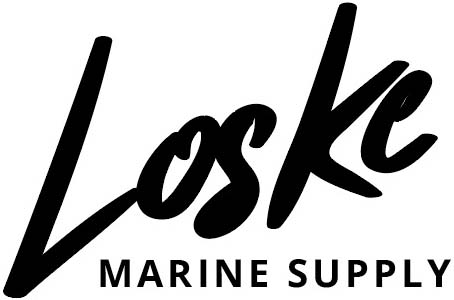Embark on an exhilarating voyage into the intricate realm of marine engine systems with our article, "Exploring the Inner Workings of Marine Engine Systems: A Journey into Power and Performance." Brace yourself for an enlightening adventure as we plunge into the heart of these robust machines, unveiling the secrets behind their immense power and unparalleled performance.
Unraveling the Mysteries of Marine Engines:
From the thunderous roar of engines to the subtle vibrations felt underfoot, marine engine systems serve as the lifeblood of seafaring vessels, propelling them through challenging waters with utmost efficiency. Join us in this exploration as we peel back the layers, exposing the intricate mechanisms that enable these engines to triumphantly conquer the sea.
The Inner Mechanics Revealed:
Discover the crucial components and systems that constitute these engineering marvels, from the combustion chambers igniting fuel to the exhaust systems releasing byproducts. Gain insights into cutting-edge technologies propelling advancements in marine engine systems, allowing for higher power outputs, enhanced efficiency, and reduced emissions.
Whether you're an engineer, a passionate boating enthusiast, or simply curious about the inner workings of these impressive machines, this article promises to captivate and educate, leaving you with a profound understanding of the remarkable power and performance behind marine engine systems.
Types of Marine Engines:
1. Inboard Engines: Positioned within the hull for optimal weight distribution, inboard engines excel in larger boats, offering outstanding torque and fuel efficiency.
2. Outboard Engines: Mounted on the transom, outboard engines provide propulsion and steering, ideal for smaller vessels with excellent maneuverability.
3. Stern Drive Engines: Combining inboard and outboard advantages, stern drives offer improved handling and fuel efficiency.
4. Diesel Engines: Renowned for durability and fuel efficiency, diesel engines power commercial vessels and larger boats with high torque.
5. Gasoline Engines: Popular in smaller recreational boats, gasoline engines offer simplicity, affordability, and are suitable for lower power requirements.
Components of a Marine Engine System:
- Engine Block: The foundation housing cylinders, pistons, and internal components.
- Cylinder Head: Atop the engine block, it contains combustion chambers, valves, and spark plugs.
- Pistons and Connecting Rods: Pistons generate force for the crankshaft via connecting rods.
- Crankshaft: Converts piston motion into rotational motion, transmitting power.
- Camshaft: Controls valve opening/closing for precise combustion timing.
- Intake and Exhaust Valves: Control air-fuel mixture entry and combustion byproduct exit.
- Timing Belt or Chain: Synchronizes crankshaft and camshaft movements for precise valve timing.
- Engine Control Unit (ECU): Monitors sensors, optimizing performance and fuel efficiency.
Fuel Systems in Marine Engines:
Efficient fuel delivery ensures optimum performance and fuel economy.
- Fuel Tank: Stores fuel.
- Fuel Pump: Draws and delivers fuel.
- Fuel Filters: Remove impurities.
- Fuel Injectors or Carburetors: Atomize fuel.
- Fuel Pressure Regulator: Maintains constant fuel pressure.
- Fuel Rail: Distributes fuel to injectors.
Cooling Systems in Marine Engines:
Prevent overheating for optimal performance and longevity.
- Raw Water System: Circulates water from the environment.
- Closed Cooling System: Uses coolant to transfer heat.
- Heat Exchanger: Transfers heat between coolant and raw water.
- Thermostat: Regulates coolant flow.
- Water Pump: Circulates coolant or raw water.
Lubrication Systems in Marine Engines:
Reduce friction for smooth operation and engine protection.
- Oil Pan: Collects and stores oil.
- Oil Pump: Circulates oil.
- Oil Filter: Removes impurities.
- Oil Cooler: Regulates oil temperature.
- Oil Pressure Sensor: Monitors oil pressure.
Ignition Systems in Marine Engines:
Provide the spark for combustion.
- Spark Plugs: Generate spark.
- Ignition Coils: Deliver voltage to spark plugs.
- Distributor or Ignition Control Module: Control spark distribution.
Exhaust Systems in Marine Engines:
Safely remove combustion byproducts and minimize noise.
- Exhaust Manifold: Collects exhaust gases.
- Muffler: Reduces exhaust noise.
- Catalytic Converter: Reduces emissions.
- Exhaust Elbow: Connects manifold to exhaust pipe.
- Exhaust Hose: Releases gases into water or atmosphere.
Maintenance and Troubleshooting Tips:
Ensure engine longevity and reliability.
- Regular Inspections: Check for wear, leaks, and damage.
- Fluid Checks: Monitor oil, coolant, and fuel levels.
- Filter Replacements: Replace filters as recommended.
- Battery Maintenance: Inspect and clean terminals regularly.
- Proper Fuel Handling: Use clean, high-quality fuel.
- Proper Winterization: Protect the engine during winter.
- Troubleshooting: Diagnose and resolve issues promptly.
Conclusion: The Importance of Understanding Marine Engine Systems
In conclusion, understanding marine engine systems is paramount for boating enthusiasts. It allows appreciation for the engineering marvels propelling vessels and enables proper maintenance and troubleshooting. Whether you're a seasoned boater or a curious observer, exploring the inner workings of marine engine systems unveils their incredible power to conquer the sea.
Embark on this journey into power and performance, and let the captivating world of marine engine systems inspire your next boating adventure. Happy sailing!
